Warsaw went through some incredibly dark times over the past hundred years, but in the last few decades the city transformed itself into a vibrant metropolis full of surprising sights and activities. Today it’s one of Europe’s most interesting upcoming city trip destinations. Trot Op! went in for an extensive look.
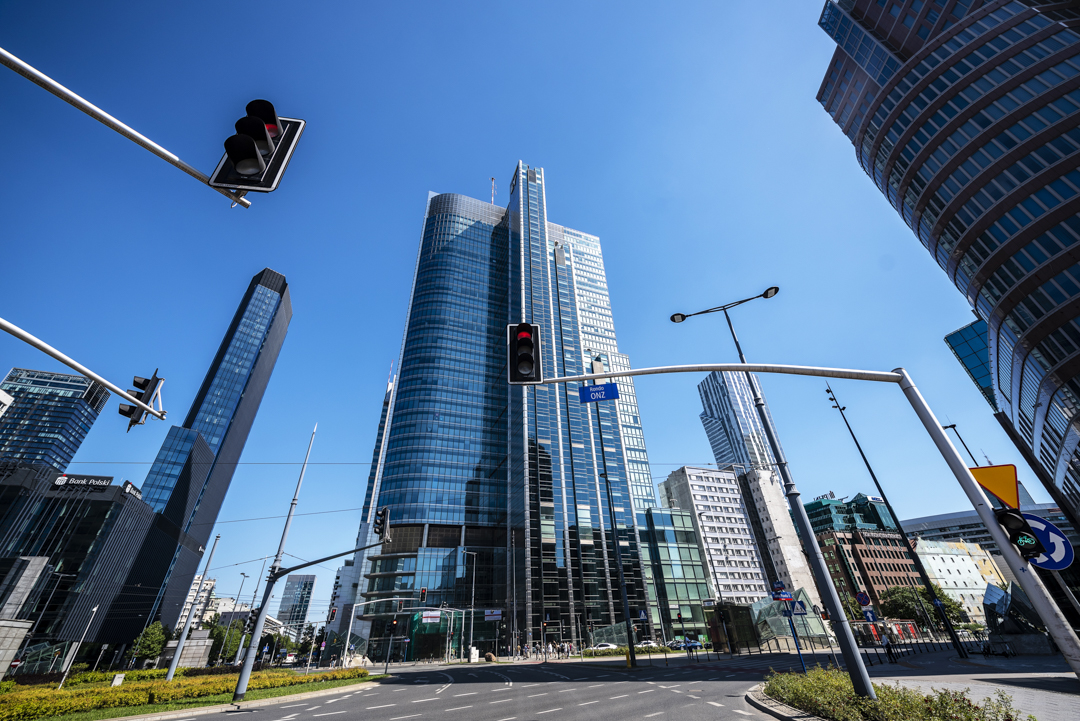
When David Bowie was touring from Moscow to West Berlin in the mid-seventies, his train made an unexpected stop in Warsaw. Because spending two hours digging his coke nose in the station wasn’t the man’s idea of a well-spent afternoon, he decided to make a virtue of necessity and took a little stroll around the neighbourhood. The absolute desolation hitting him in the face like a wet mop during that walk made such an impression he wrote Warszawa shortly afterwards: probably the most depressing song in his entire repertoire. So Bowie’s blitz visit almost traumatized the poor man, and at the time nobody could really fault him for it.
“When David Bowie visited Warsaw in the mid-seventies, it made him write the most depressing song in his entire repertoire – and at the time nobody could really fault him for it.”
After all, no European city went through more misery throughout the last century than Warsaw. Before WWII, more than a million people lived here. Six years later, fewer than a thousand remained. 700,000 civilians did not survive the war, including nearly 400,000 Jews. The rest had fled or been deported. More than 80% of the city – once called the Paris of the east – was methodologically demolished by the Germans after a widespread revolt. This to serve as a warning to the rest of occupied Europe. After the war, Poland suddenly found itself behind Stalin’s iron curtain, which was not exactly a joyous intermezzo either. Bowie’s Warsaw was a communist dystopia: a grey city with more ghosts and ruins than hope to be found. You’d get depressed as well.
What to do in Warsaw: 10 exciting tips for a trip to the Polish capital
Fortunately, that whole iron curtain was thrown right back in the trash where it belonged more than thirty years ago, and Warsaw now looks a lot nicer. If Bowie could still walk the streets today, he’d write a much happier song. Since the dissolution of the Soviet Union and certainly since Poland’s accession to the EU in 2004, the country has come a long way. Modern Warsaw is a bustling capital full of people who want to move forward in life. The city attracts plenty of multinationals and investors; the old town was fully restored; a whole forest of shiny glass skyscrapers emerged in the business district and a lot of vacant buildings were given a second life. In a short time, Warsaw turned into an interesting city trip destination, secretly not at all inferior to the more popular Krakow and perhaps even more versatile. You’ll walk through vast beautiful parks, through hip neighbourhoods full of bars and restaurants in repurposed industrial sites and you’ll find plenty of top museums to visit. Time to book a trip and experience it for myself I thought. And because I’m not one for dawdling, that’s precisely what happened. I’m back home already and took ten essential and surprising travel tips for Warsaw with me. Somebody stop me!
1. Stare Miasto: Warsaw’s “Old” Town
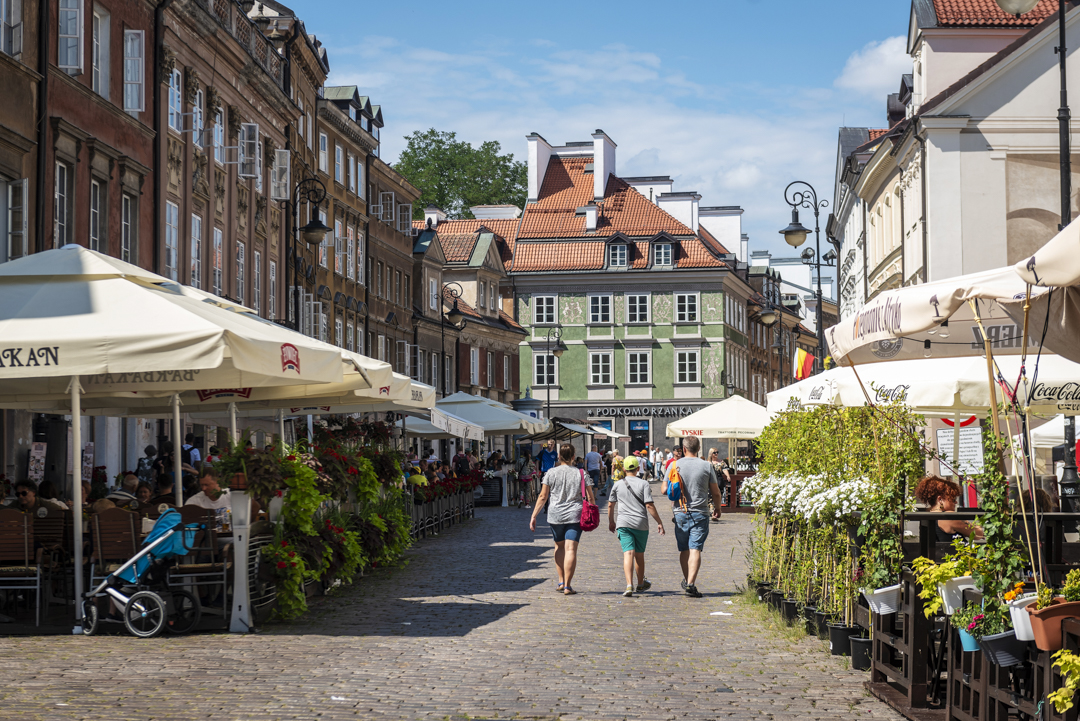
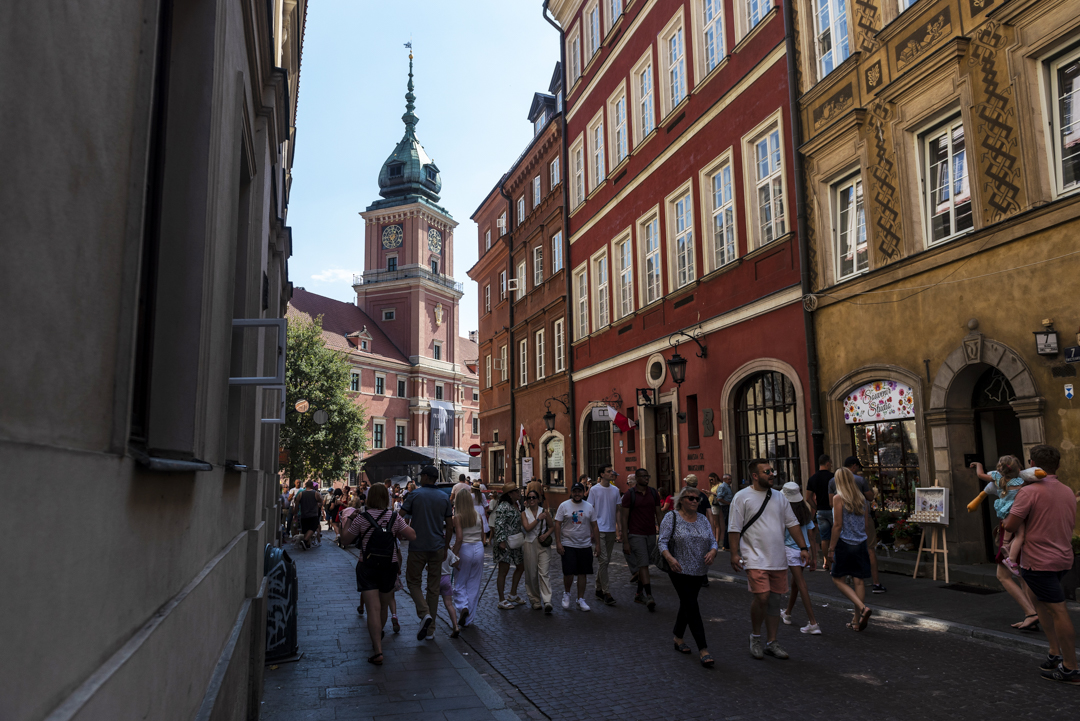
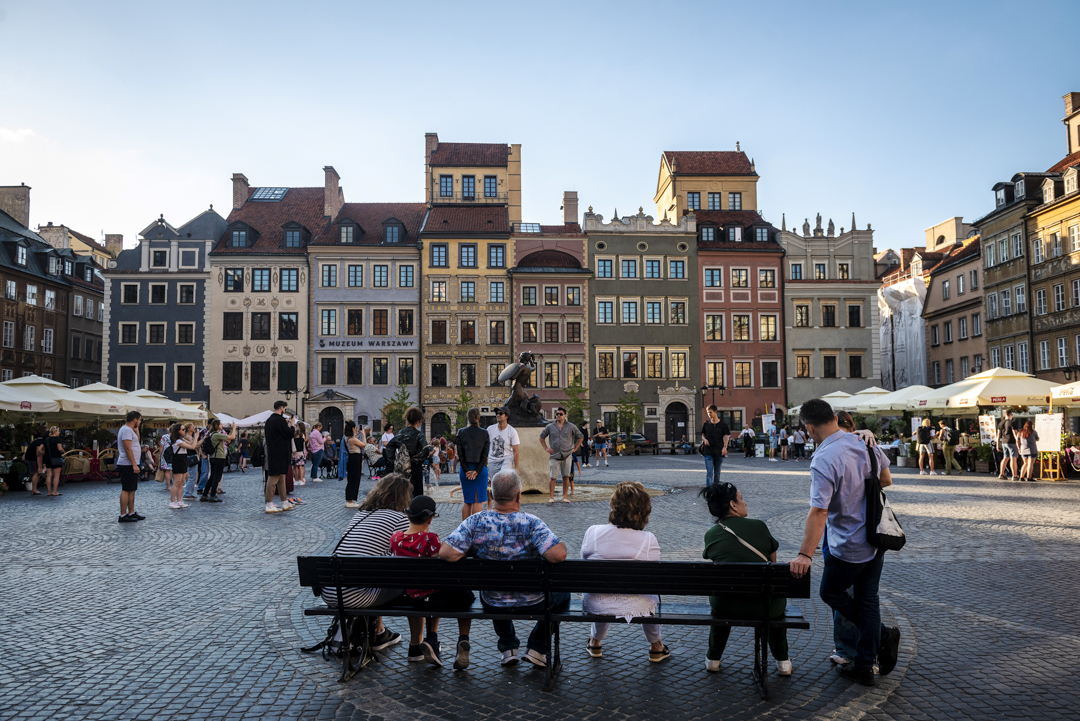
The historic centre of Warsaw is the most recognizable part of the capital for people who’ve already been elsewhere in Poland. Here you’ll stroll – together with a whole bunch of other tourists – through photogenic cobblestone streets full of ice cream stalls, and over lively squares lined with painted facades and little spires as you know them from Krakow and other Polish cities. When you take a closer look at those facades however, you’ll see them decorated with strange dates from the fifties. This is because the Old Town is secretly one of Warsaw’s newest parts. Towards the end of WWII, this area literally had only two walls left standing – those Germans sure are thorough – so they had to rebuild everything from scratch. The royal palace for example, was not completely finished until the mid-eighties and after numerous public fundraisers – the soviets as you know, were not the biggest royalists. The city walls that now stand here were largely re-erected with bricks the regime joinked from other cities such as Wroclaw and Nysa. Those who don’t know this history will barely notice the restorations, because it was beautifully done. This is by far the most touristy part of the city and quite pleasant to amble through for a while, but the rest of Warsaw is way more surprising. More on that later, let’s first delve into recent history a bit more.
2. The Warsaw Rising Museum: a guide through the fog of war
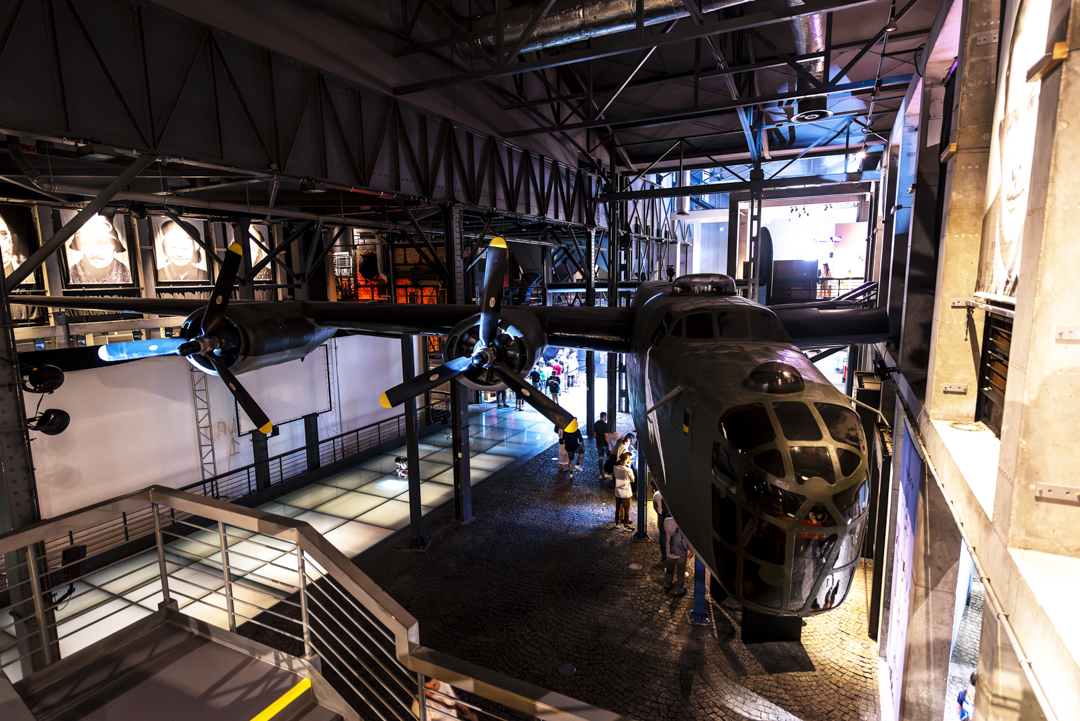
There are dozens of fine museums to visit in Warsaw. I’d only booked a four day trip though, and I didn’t want to spend half of it inside, so I mainly focused on the Warsaw Rising Museum. It’s located in Czyste – a commercial district near the city centre – and together with the POLIN Museum, which tells the tragic story of the Polish Jews, it’s essential to understand the events of the past century. The museum is housed in a huge five-story tram depot in a park, and it tells the whole story of Warsaw during the war and the later Soviet period. The focus lies on the heroic but tragically doomed uprising of the Polish resistance army against the Nazis in 1944. 18,000 resistance fighters and an estimated 200,000 civilians lost their lives because of it, and in retaliation the city was completely destroyed while both the Allies and the Red Army looked on. The museum is full of interactive displays, photos, recordings, and personal stories. There’s even an Allied bomber hanging from the ceiling and in a 3D cinema you can virtually fly over the destroyed city. This won’t exactly make you happy, but that isn’t the intention either. The Youtube version can be found here and is pretty mind-boggling. Not a single building was left standing: a blueprint of human destructiveness. Are we all appropriately depressed by now? On to the next fun story it is! www.1944.pl
3. The Palace of Culture and Science: Stalin’s little gift
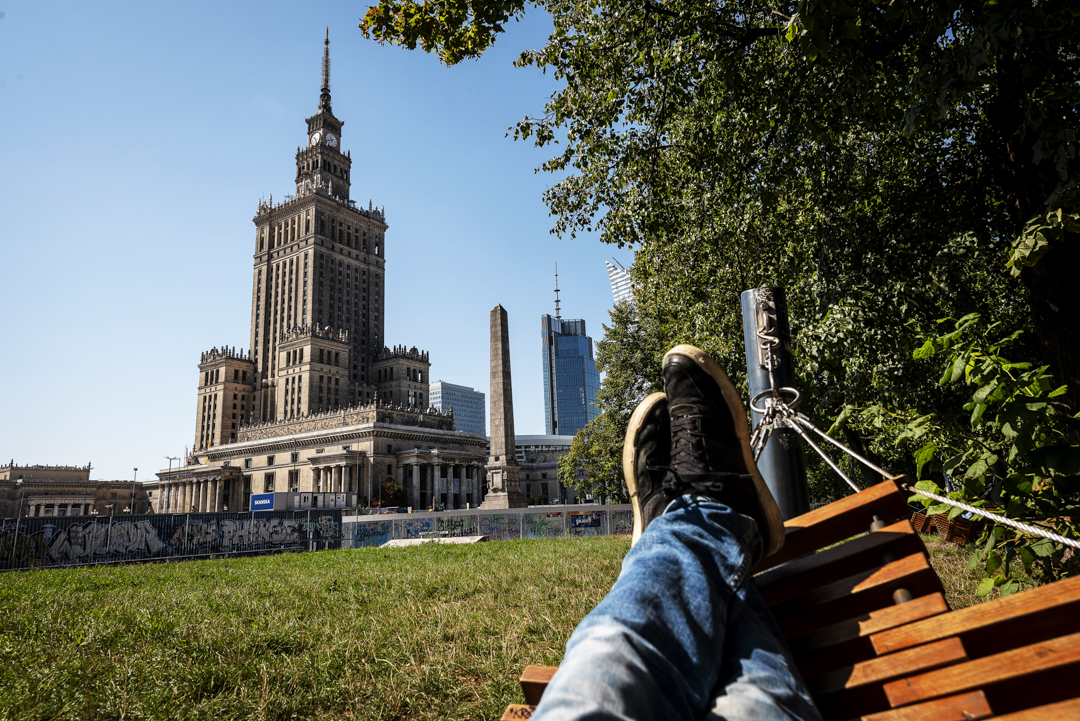
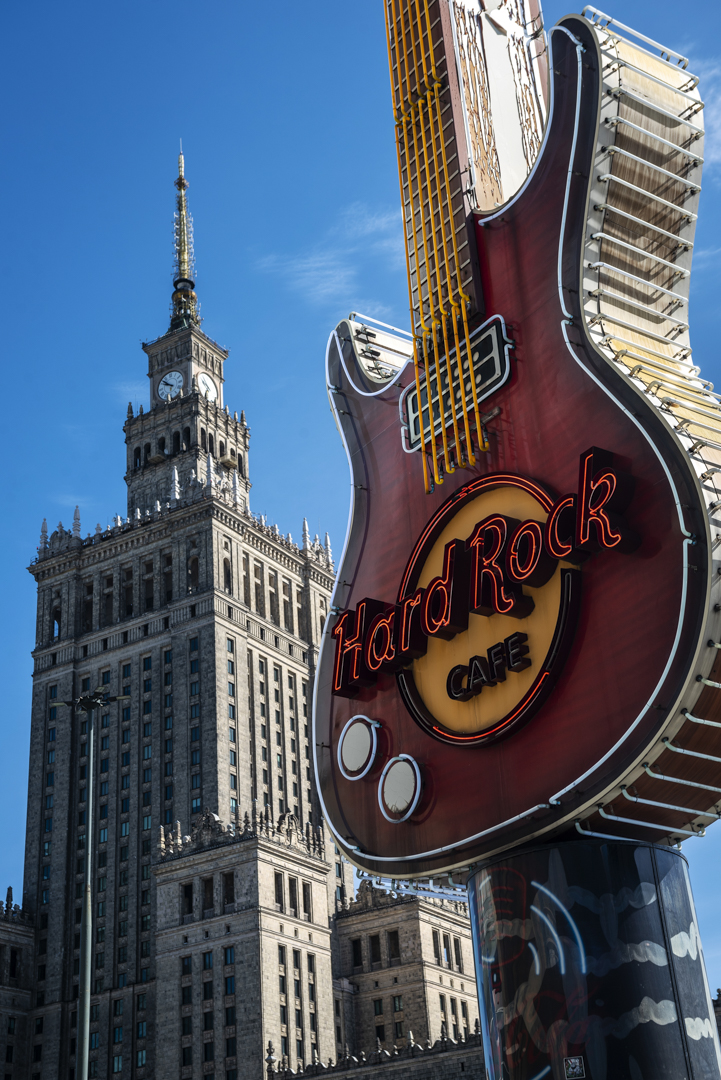
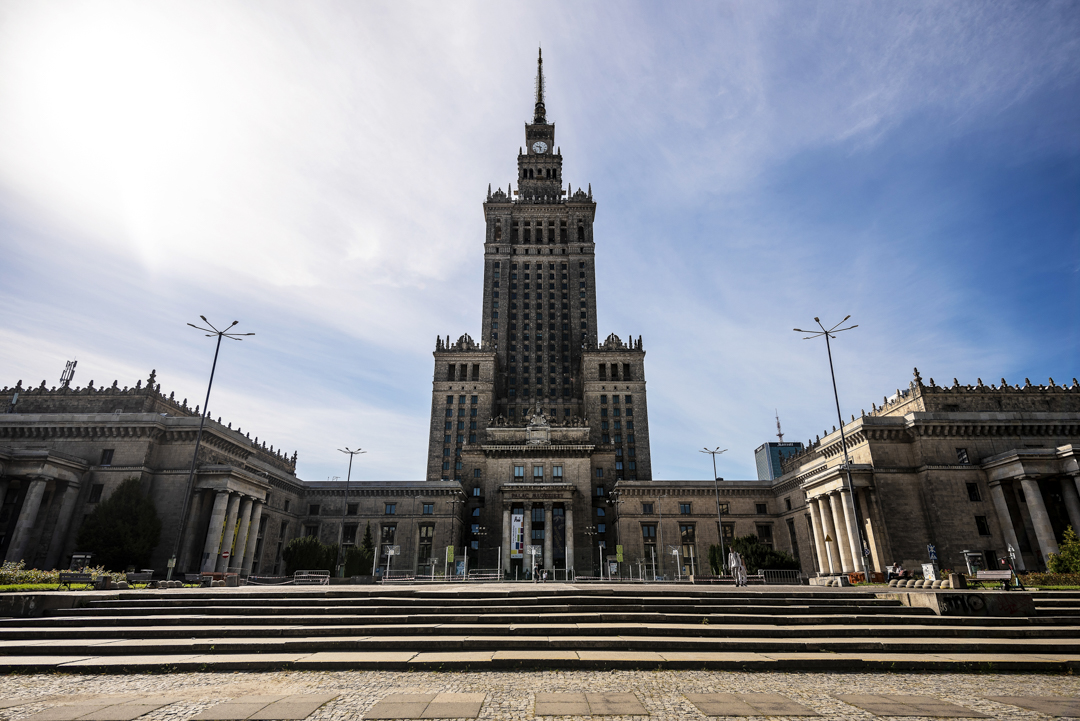
Throughout the last twenty years, the skyline of Warsaw has unrecognisably changed. Due to the many skyscrapers that have sprung up in recent decades, the downtown now looks almost American. One building on the other hand, undeniably dates from the Soviet era: the 237-meter-high Palace of Culture and Science, which looks like it came straight out of a Batman movie. At first it was called the Joseph Stalin Palace of Culture and Science, because Stalin ordered the construction of it. Not because he was in a particularly generous mood, but to push the USSR dominance (but especially his own) into the faces of the Poles, every time they dared to look up hoping for a brighter future – ‘not in MY Soviet Union you won’t!’ Unfortunately for good old Joseph – and to the delight of the rest of the Eastern Bloc – he never saw the finished building due to a well-deserved brain haemorrhage. And because after some careful consideration, everyone agreed he wasn’t the coolest of blokes after all, his name was quickly chiselled off of all the plaques. This left Warsaw with a huge tower nobody wanted while it dominated the entire skyline. The building remained controversial through the years, and even now demolition talks sometimes pop up. So far however, they’ve been putting it to good use. It’s now home to a conference centre, a cinema, a theatre, two museums, a library and a university campus. On the 30th floor there’s a very popular viewing platform and on the 43rd you can watch a family of peregrine falcons through a webcam from the comfort of your own home. Finally, 19 cats live in the basement* to help fight pests. They even got their own little room which was dubbed Cat Land. You now know this and you’re welcome.
*PS: if you want to take a look into that basement, you’ll find an interesting article with photos here.
4. Adventure Warsaw: a nostalgic drive through communist Poland
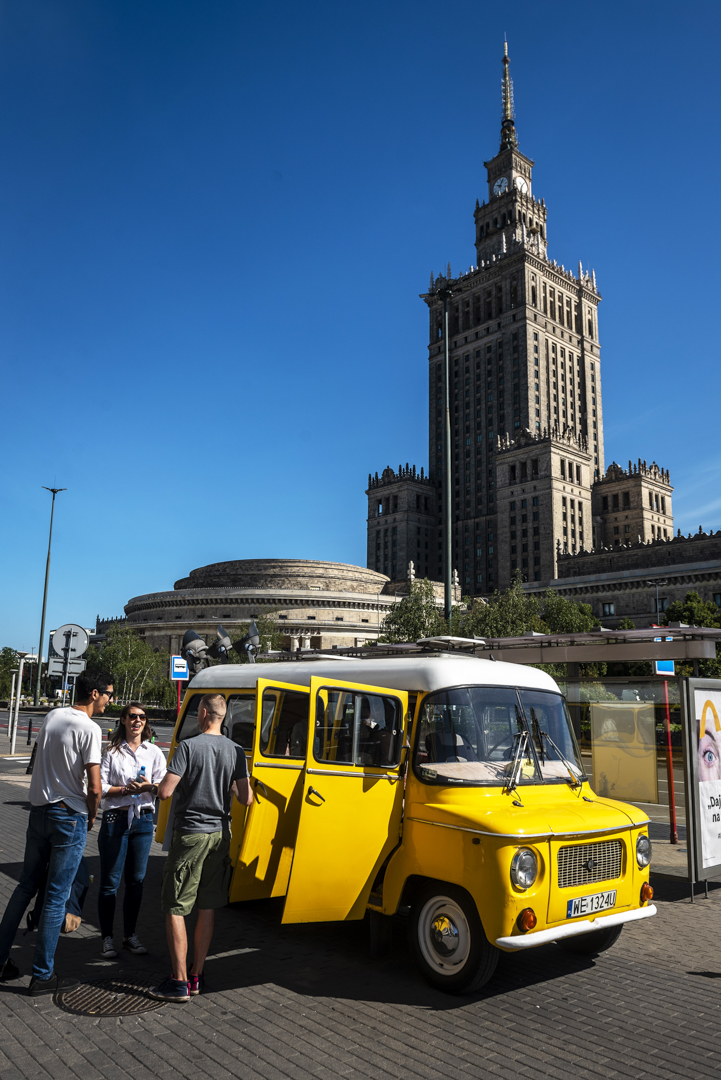
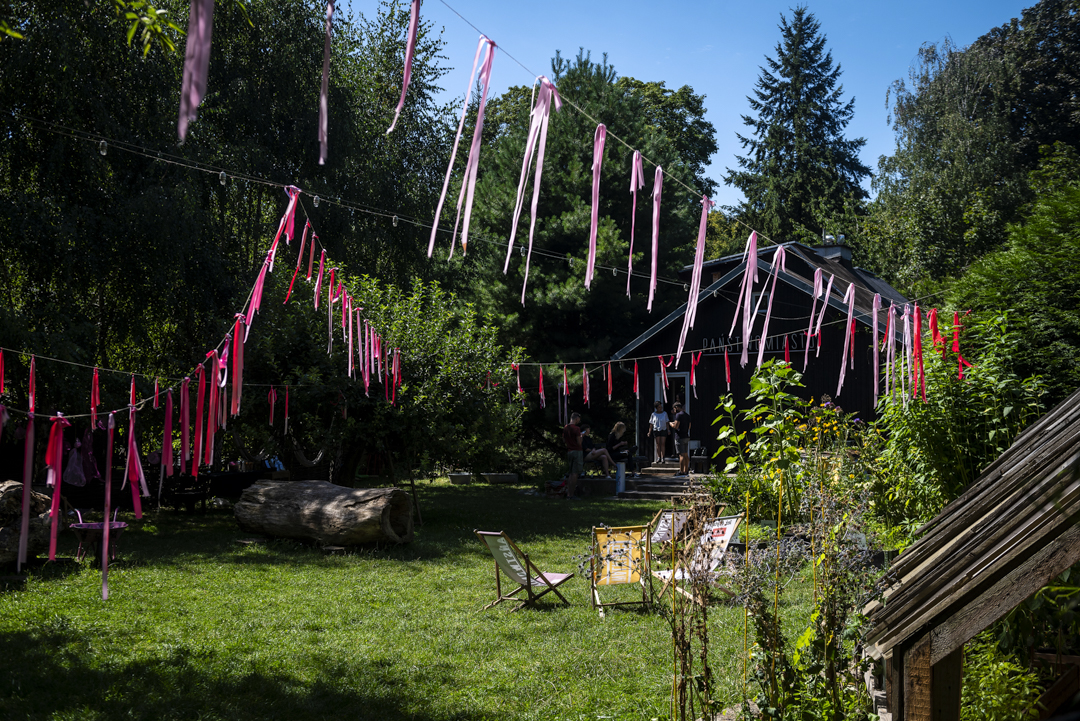
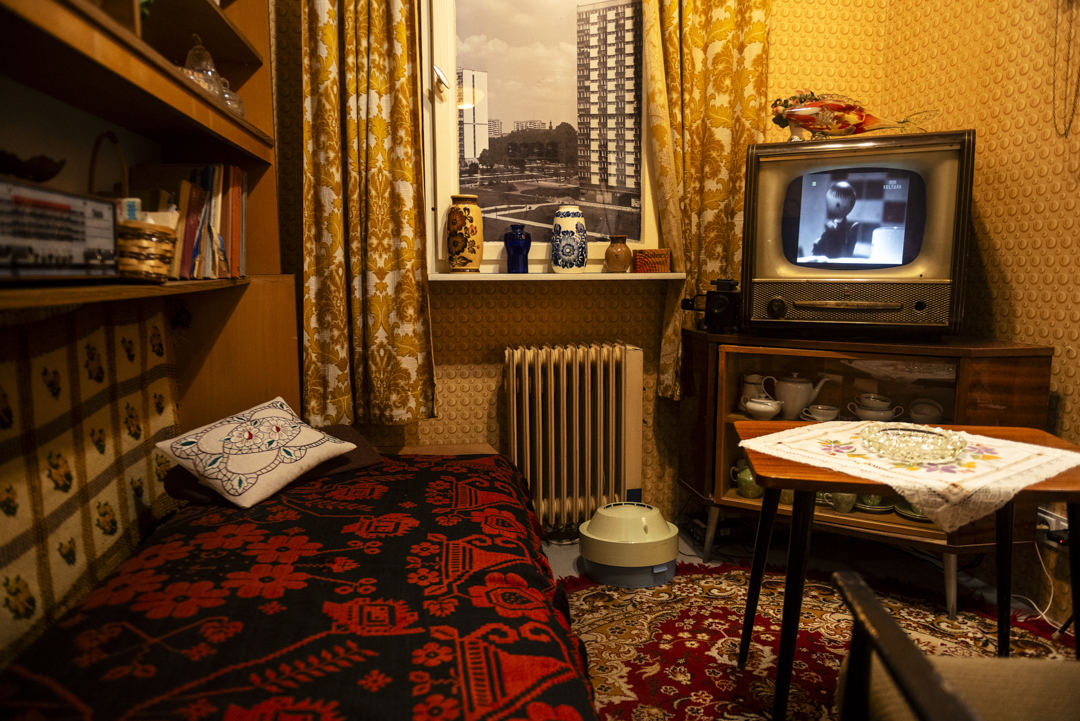
The Communism Tour I booked with Adventure Warsaw started in the shadow of the same tower – albeit more specifically under the neon guitar sign of the Hardrock Café they opened across the street. That made for a bit of a contrast indeed. With Lenin and Stalin violently turning in their graves, we got into an old yellow Nysa van. Half the city used to drive around in these, so it was a nice extra touch to improve the immersion. The first stop was the Museum of Life under Communism which lies hidden in an old apartment building. Here you get to see the whole timeline from the forties to the nineties, with my personal highlight being the Rolling Stones concert in 1967, which attracted so many people yearning for some rock-‘n-roll the gate was breached, ending in heavy riots with the police. In the museum you can visit a typical grocery store from back in the day, where you had to pay with food stamps and the counter is kept appropriately empty even now. You can also sit in the living room of a small apartment from the sixties – which includes a carpet against the wall next to the bed to provide some insulation. This is museum is very good at making the recent past visually tangible. The rest of the tour led us past huge pompous (but sometimes beautiful) buildings and boulevards built by the regime to cover up what was left of old Warsaw, but also to surprising Jazdów. This is a residential area in the centre that strangely enough consists of a few dozen wooden bungalows in a small forest. These were given to the USSR as part of a reparation payment by Finland (which, by the way, the Russians had of course invaded first). Today, five are still inhabited and the rest are used by all kinds of social organizations. Idyllic place that feels like a green suburb, but one right in the middle of a bustling metropolis. www.adventurewarsaw.pl
5. The Praga District: from sad to hip in ten years
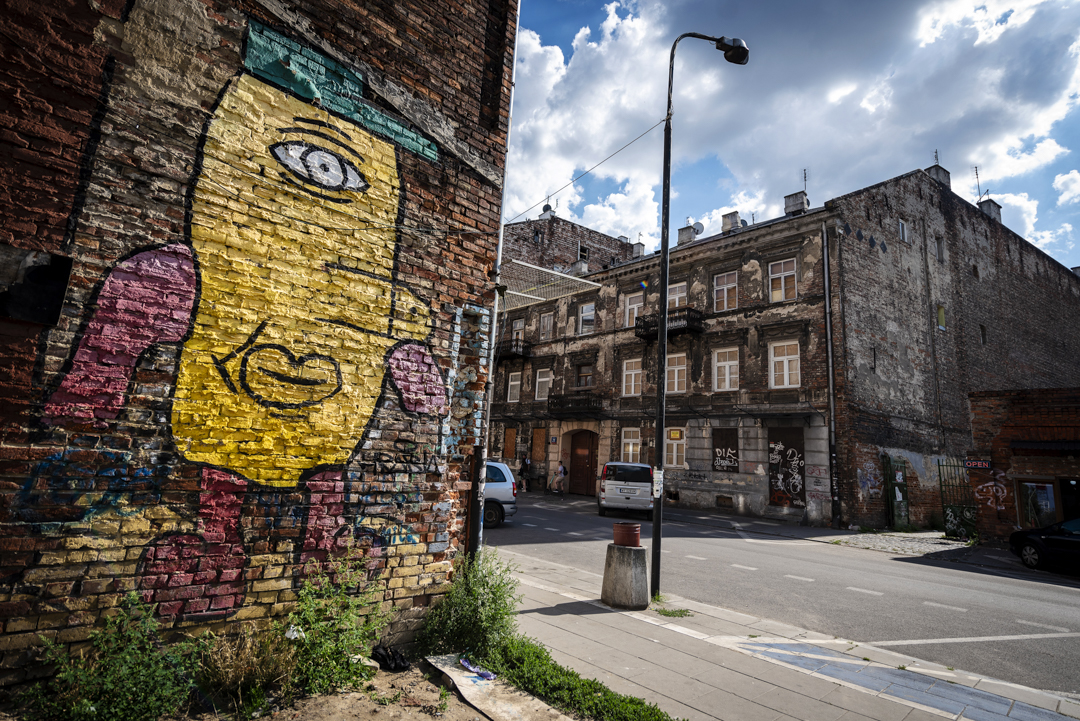
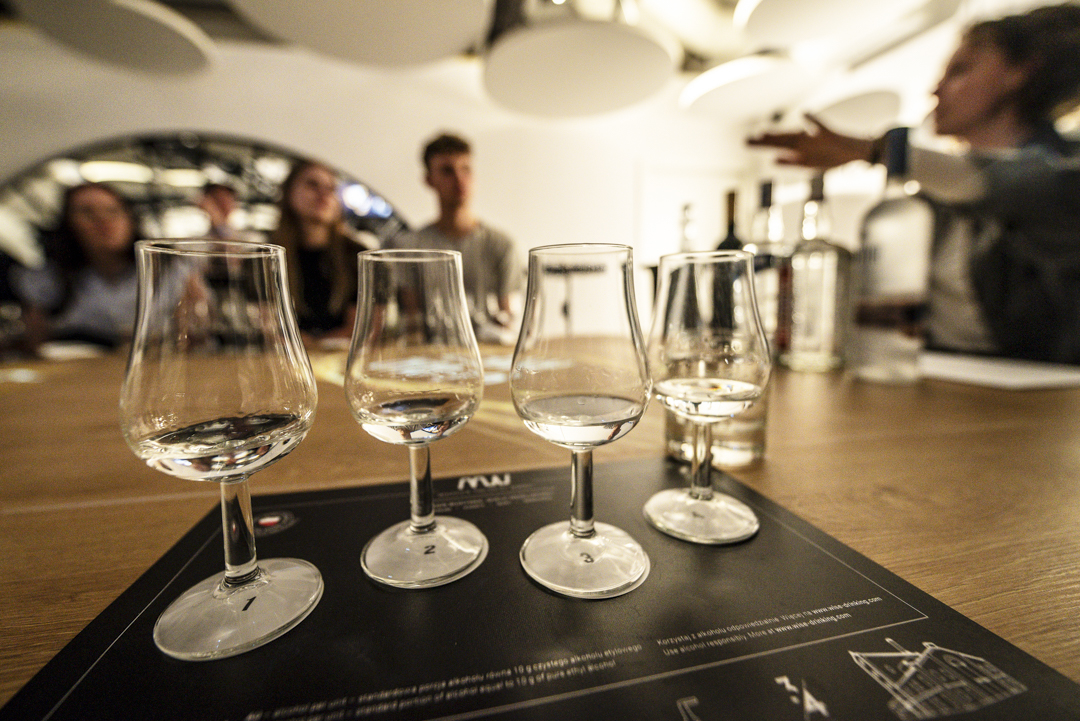
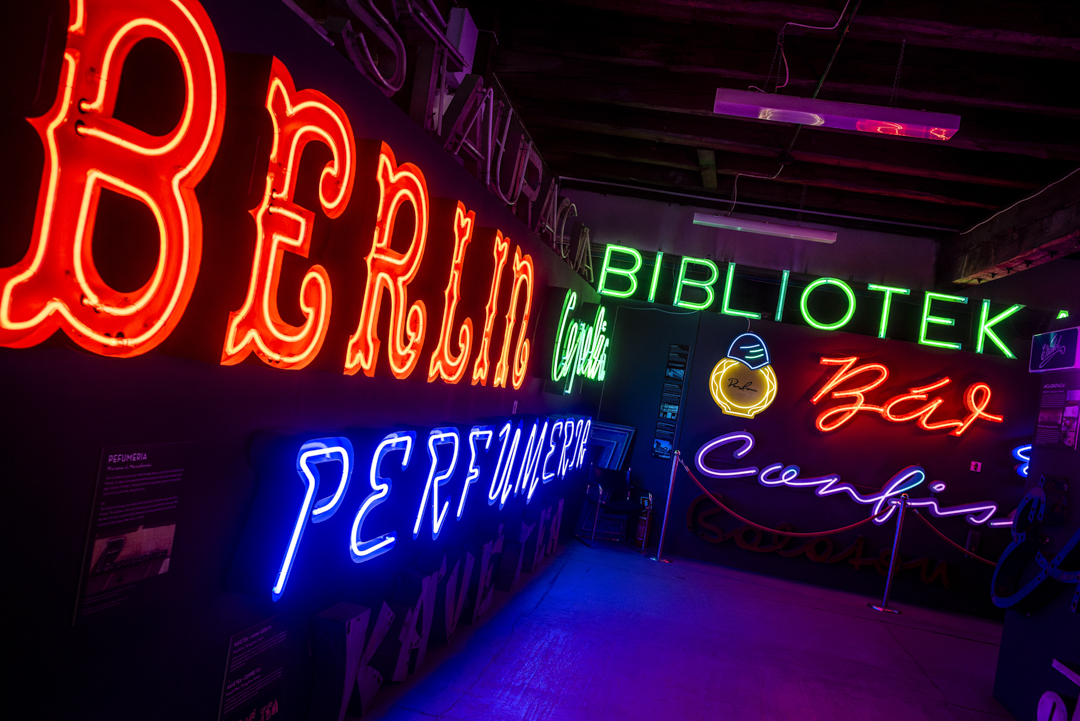
On the other bank of the Vistula lies the Praga District. This part of Warsaw came out of the war somewhat less ravaged, and is therefore actually more authentic than the old town. According to my guide Piotr, this used to be a place you didn’t venture into if you wanted to keep your money and your virginity intact. Times change however, and when downtown real estate prices skyrocket, less popular neighbourhoods quickly become attractive. Praga is currently a hip and alternative place: full of street art, entertainment and little galleries. I explored it for half a day and visited the small but interesting Neon Museum. Here, 200 neon signs were collected that used to decorate buildings in the Soviet years, providing some very welcome colour in a sea of grey. Piotr – himself a child of the eighties – still recognized almost all of them and had a story to tell about most. Perhaps the biggest hotspot in this area is the Koneser Praga Center: a former vodka distillery that was given a new lease of life in recent years. Now you’ll find fancy boutiques here, as well as restaurants and bars, a Google campus and two museums. I – of course – visited the Polish Vodka Museum, because after the tour, you can stay for a vigorous tasting session. We had lunch in Warszawa Wschodnia: a top restaurant in an old industrial hangar where they serve classic Polish cuisine with a modern twist. Had an exquisite schnitzel there. www.neonmuzeum.org, www.muzeumpolskiejwodki.pl
6. Elektrownia Powiśle, Norblin and Browary Warszawskie: a new life for old industry
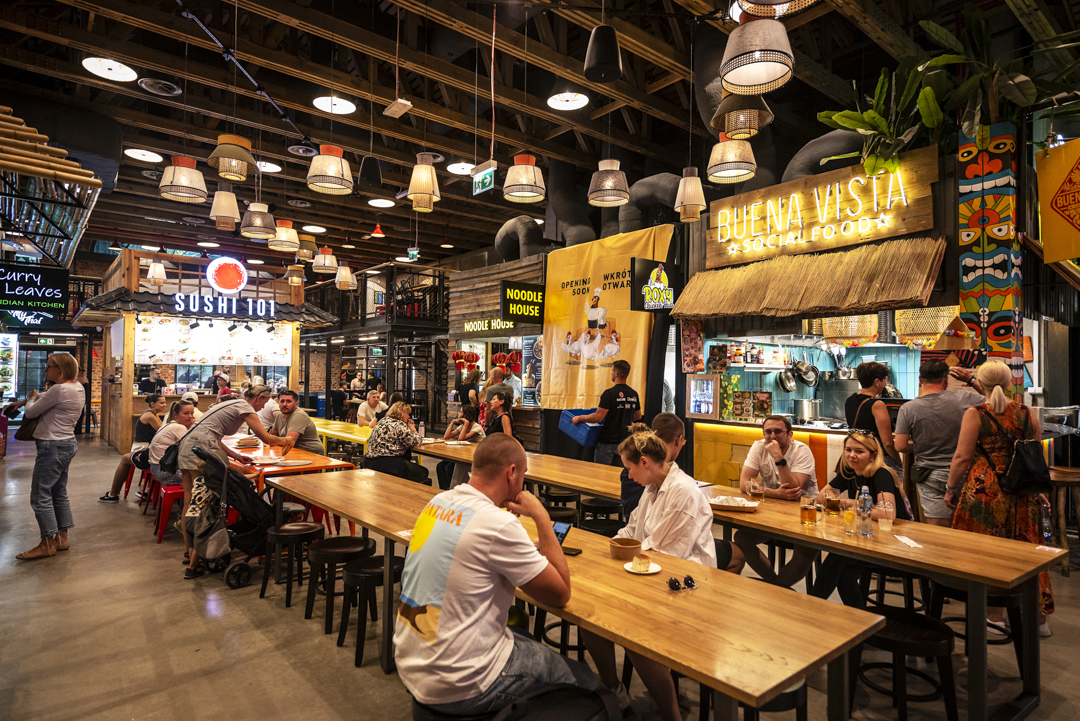
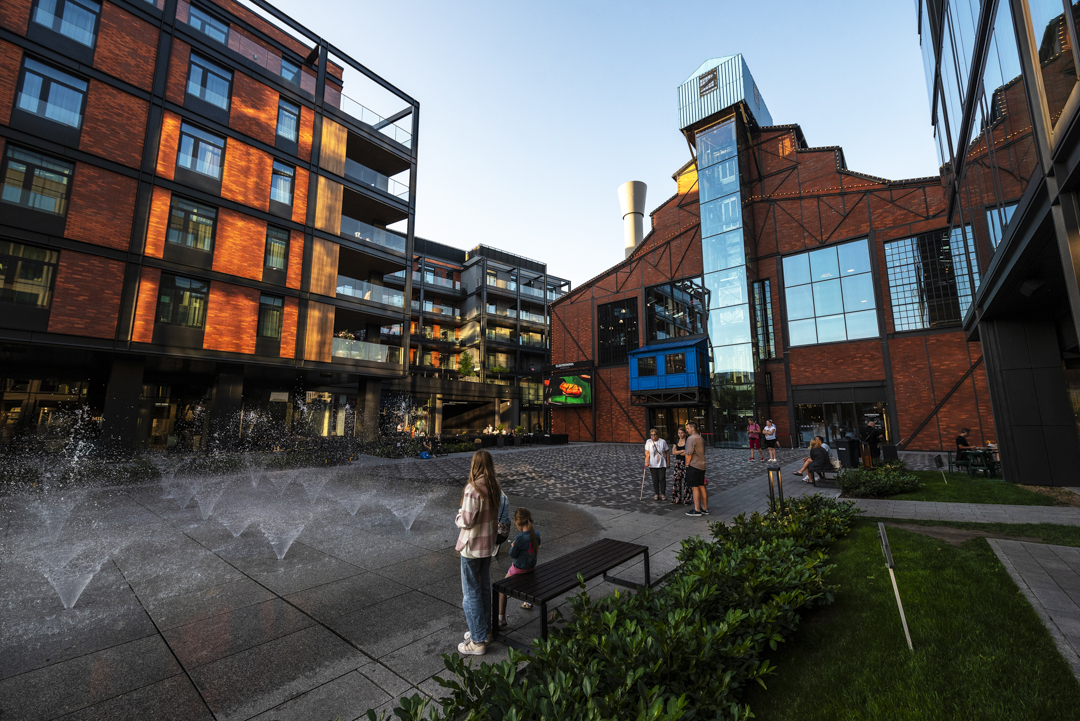
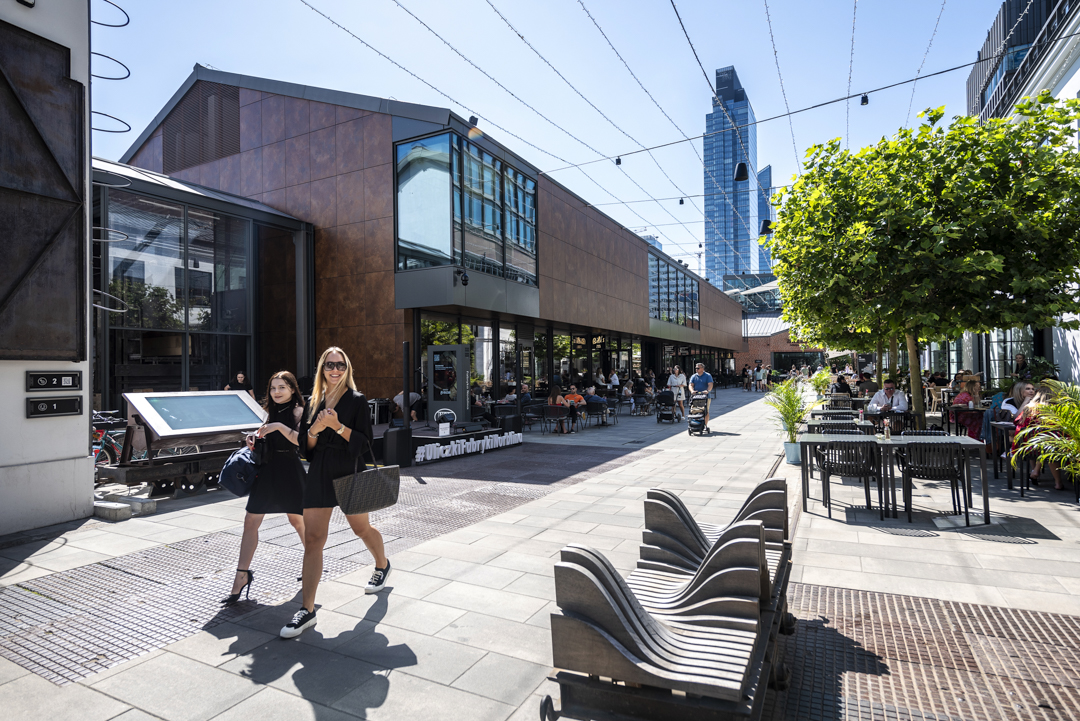
Just like in nearby Lodz – see my article here – quite a couple of industrial buildings in Warsaw were standing empty. This of course, made them pretty useless, which is why they converted several of them into new social hubs – without losing the links with the past. The Koneser Praga Center mentioned above is one of them, but such sites can also be found on the other side of the river. Elektrownia Powiśle is an old power plant with an unpronounceable name that was stylishly converted into a shopping mall full of restaurants and surrounded by lofts. Browary Warszawskie is an old brewery now full of fancy bars, restaurants and small businesses. My personal favourite is the Norblin Factory. This is a two-hectare steel factory where they used to produce metal tableware and other household items. It was converted into a real social hotspot with a movie theatre, countless restaurants and shops, the first organic market in Poland and a gigantic food hall full of dishes from all over the world. The entire site still exudes the original atmosphere, and the old factory machines can still be seen. www.elektrowniapowisle.com, www.browarywarszawskie.com.pl, www.fabrykanorblina.pl
7. Listen to Chopin in Lazienki Park
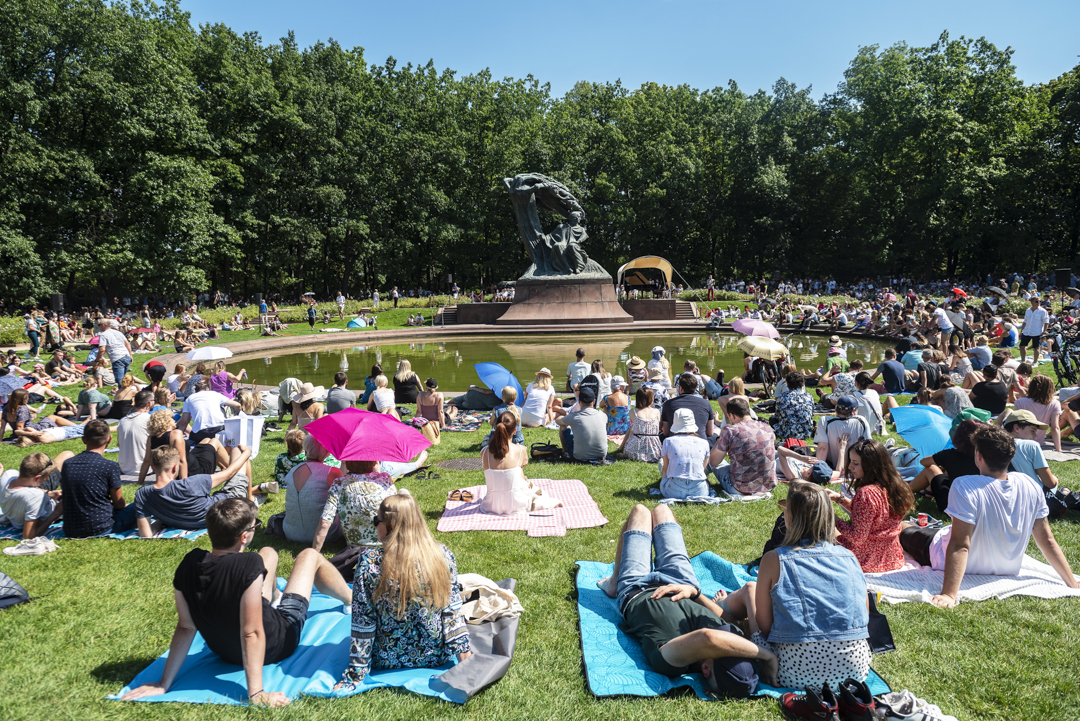
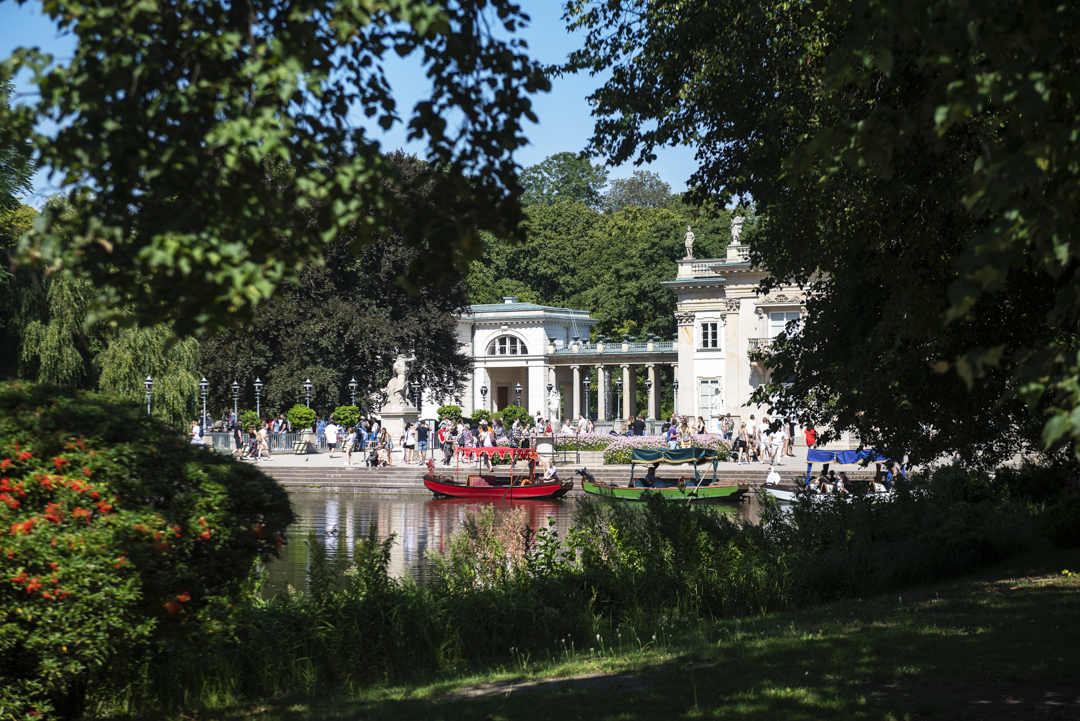
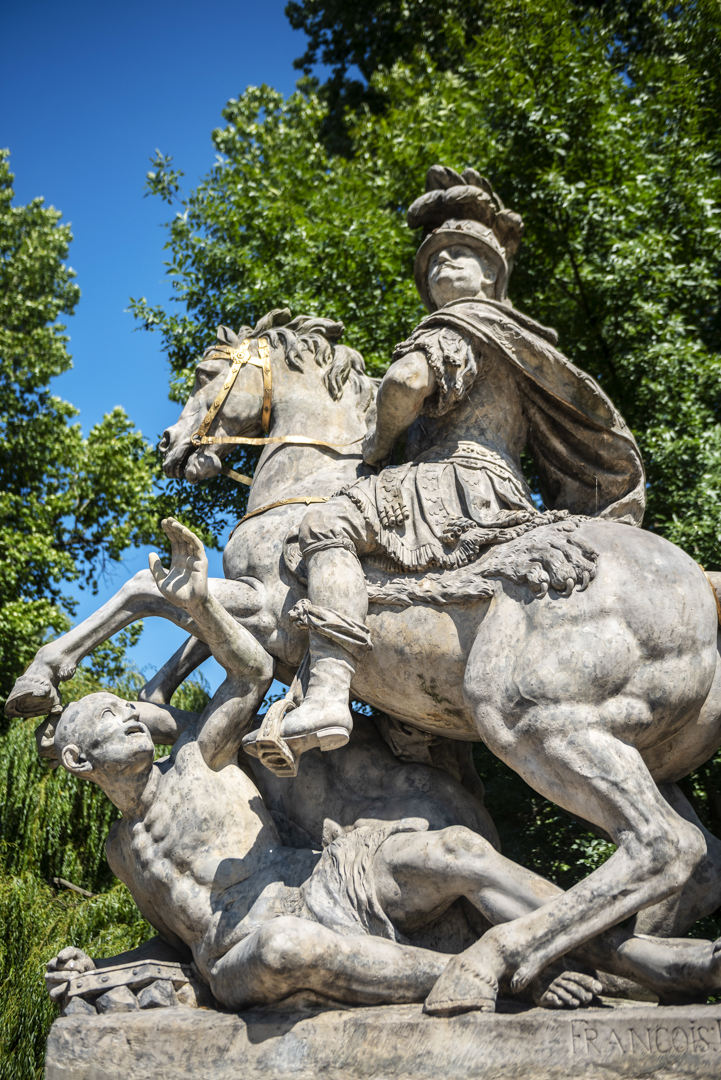
Warsaw is an amazingly green city full of nicely kept parks. Most beautiful and by far the most popular is the Lazienki Park. This is a vast 76-hectare domain that used to belong to the royal family. It’s filled with palaces and other elegant buildings. The most famous is the Lazienki Palace which stands on an island in the middle of an artificial lake. A little further – on another island – is an amphitheatre where performances are still held today. You could walk through the park for half a day and still discover new stuff behind every other tree. There are several other castles to be seen, you can visit multiple museums and a planetarium, both a Greek and an Egyptian temple were built here – kings are weird – and you can have a little stroll through a peaceful Chinese garden. On a hill in a remote corner of the park stands a monument in honour of Frédéric Chopin. His original name was Fryderyk Chopin, as he was a Pole born near Warsaw. He’s considered one of the greatest classical composers of all time and yet he only gave thirty public concerts in his lifetime. This is because he was sick almost continuously, weighed only 45kg as an adult and died at the ripe old age of 39. Warsaw however, has not forgotten him. He has his own museum, which was right across from my hotel, and the benches in the park around it play his music when you press the buttons. At the monument in Lazienki Park, a free piano concert is given every Sunday afternoon in summer to honour him. When the weather allows it, thousands of people gather around to listen. This just shows there’s still a market for high culture, but you have to keep it accessible. www.muzeum.nifc.pl
8. Relax at the Vistula riverside
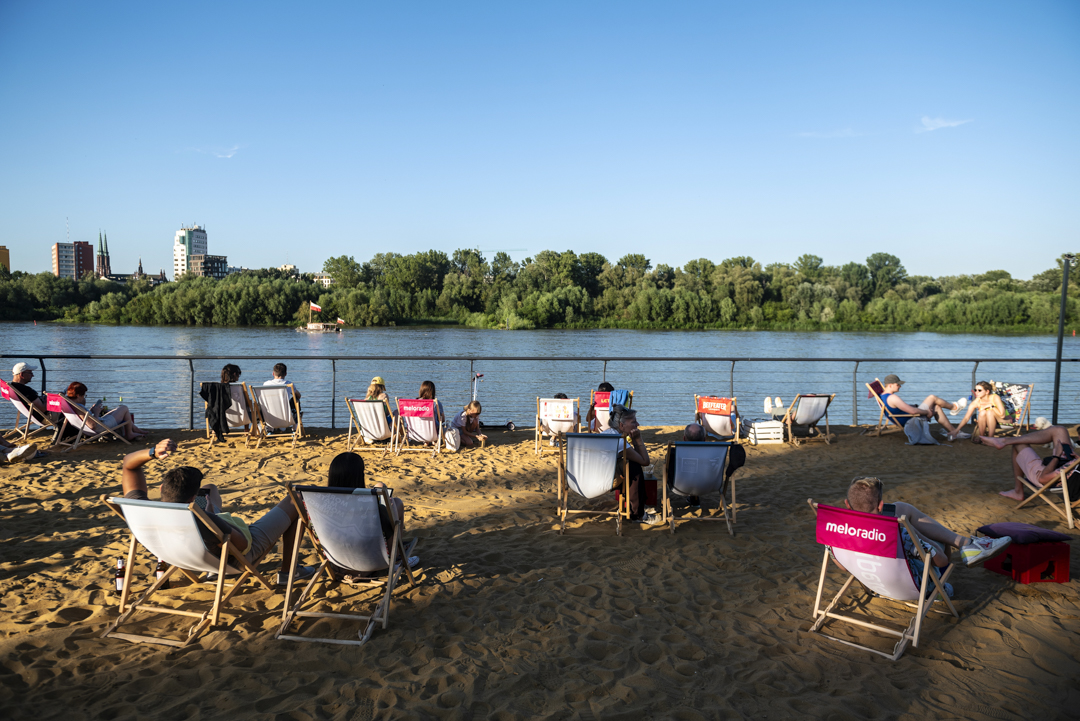
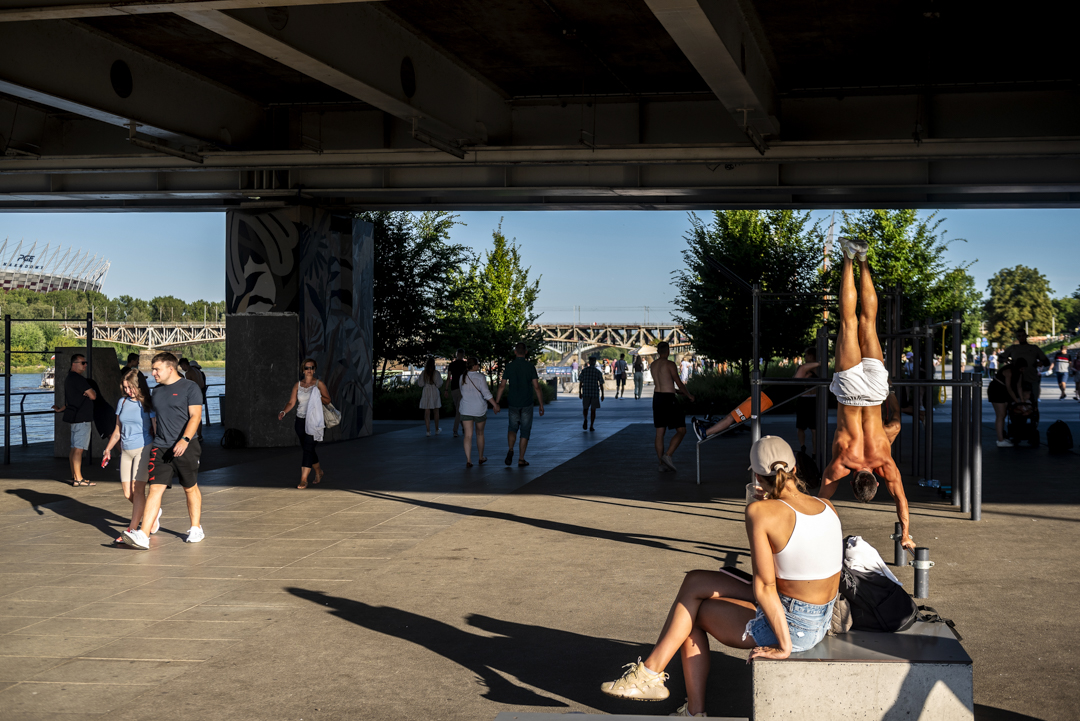
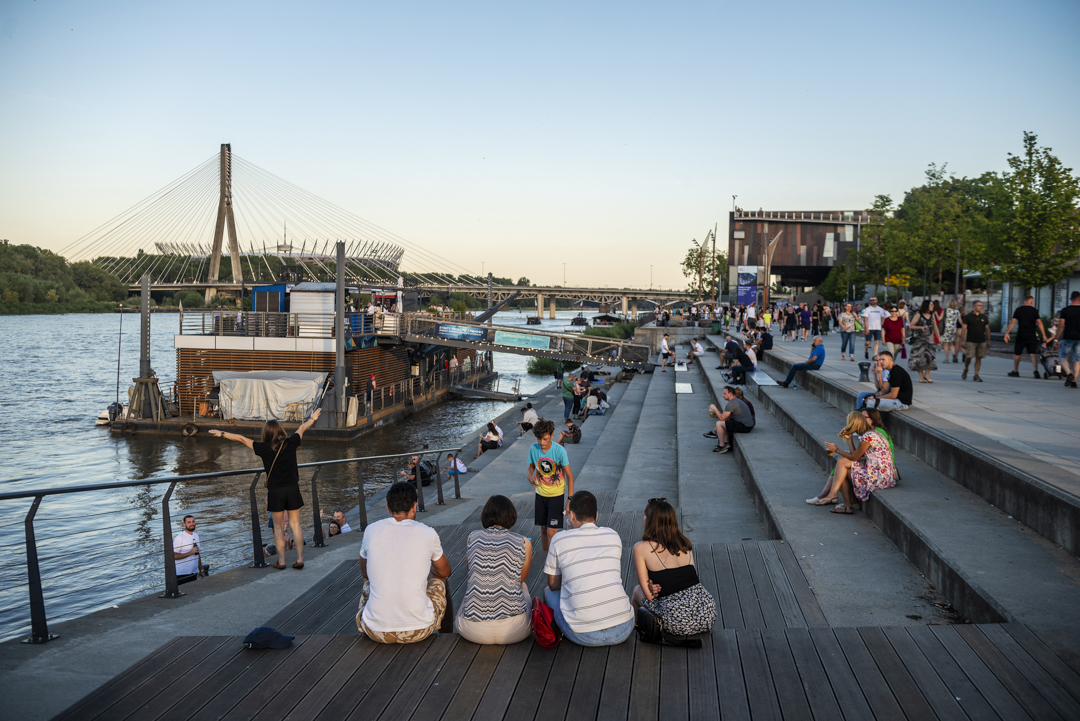
In Warsaw, there are plenty of places to start a party, but there isn’t really a dedicated area for it. Most like one, is the promenade along the bank of the Vistula. Every evening large crowds gather to sit down on the steps here, drinking beers and enjoying the sunset while street musicians jam and families walk the embankment in search of some ice cream. There are plenty of bars and restaurants set up as well: both along the quay and floating ones on the actual water. Looking for a different angle? Why not sail up and down the river in a boat? All of this combined creates a very pleasant holiday atmosphere, especially in the evening. The Copernicus Science Centre can also be found on the riverside. This is the most popular museum in the city, where you can perform all kinds of scientific experiments or gawk at the stars in the planetarium. The other side of the Vistula is more than worth a visit as well, but for a completely different reason. This bank was never straightened, so it remained beautifully wild. Hectares of untouched nature full of protected bird species can be explored by bike or kayak. According to Lonely Planet, the city beaches that you’ll find here are some of the most beautiful on the planet. Ok, they write this about every other beach in all of their little booklets, but I can’t fault them in this case. Are you getting the point that Warsaw is more versatile than you thought? Good. www.kopernik.org.pl
9. A green oasis on the roof of the University Library
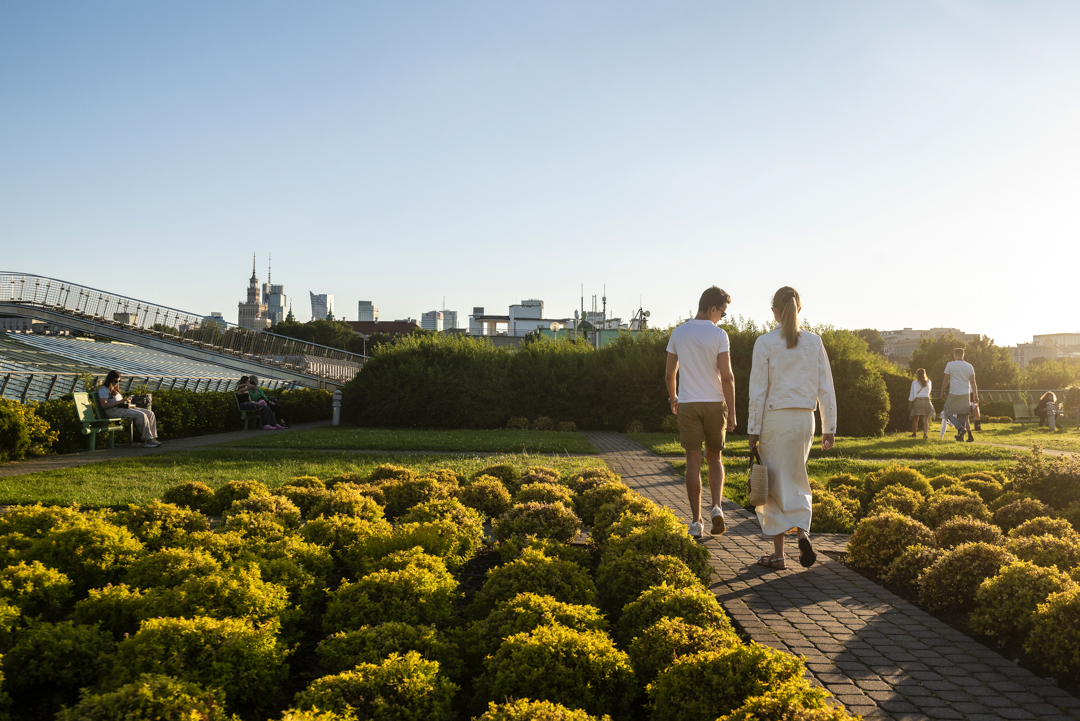
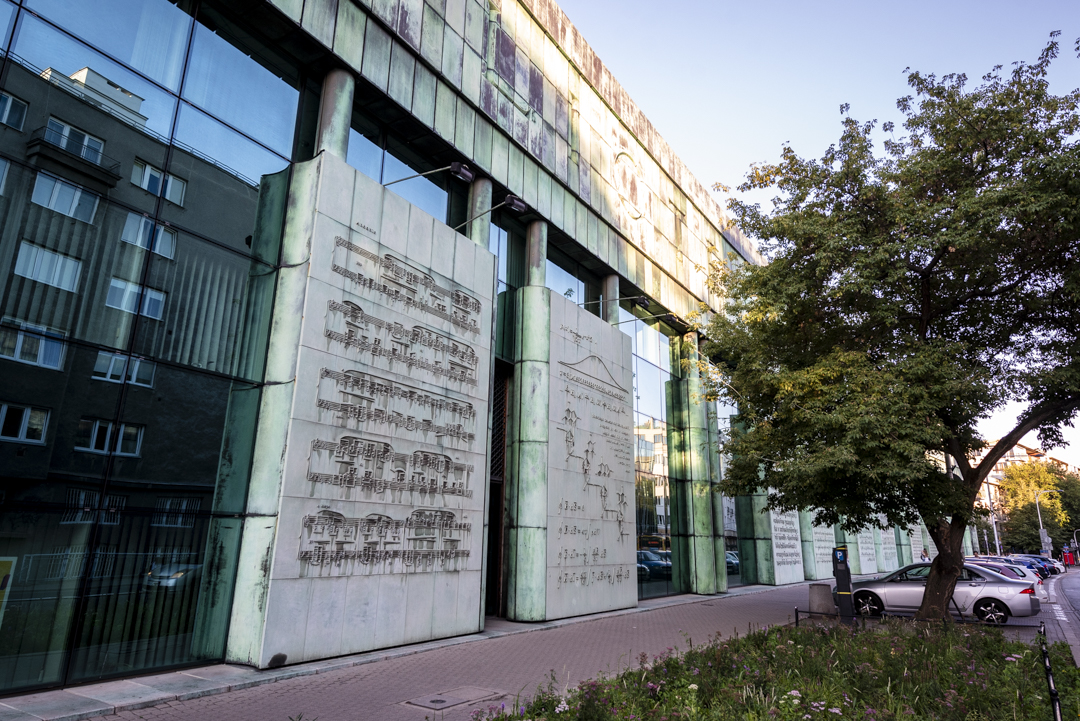
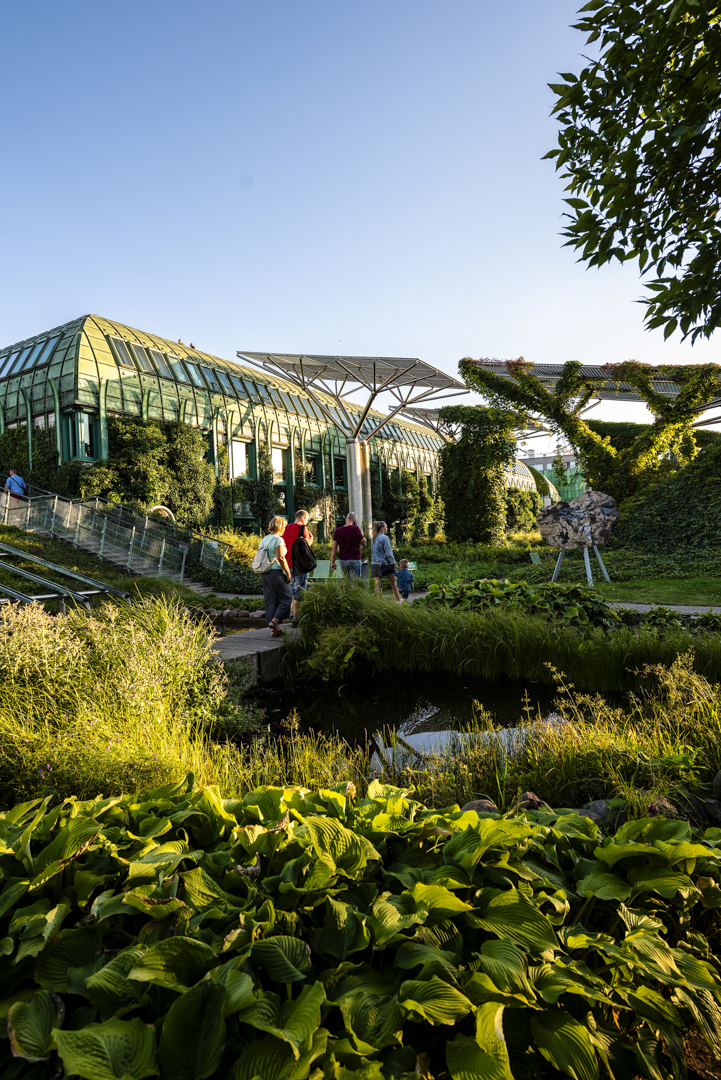
Also close to the waterside is the University of Warsaw Library – and this is not just any library. It was built in the late nineties in the typical glass and metal style thought modern at the time. As a result, it looks just a tad dated today, but in the most charming of ways. What is not dated at all – and was actually years ahead of its time – is the idea behind the building. Long before people started talking seriously about climate change and things like green rooftops, they just built one here. The entire roof of this building is a public park. A green oasis full of benches, plant-covered walking paths and nice picnic spots. From the rooftop you can look into the library itself through the large tubular windows to see the students toiling away and – especially just before sunset – you get a magnificent view of the skyline from the viewpoints. A popular place for the locals to relax, and one they are justifiably proud of.
10. Pinball Station: a classic arcade in an old railway station
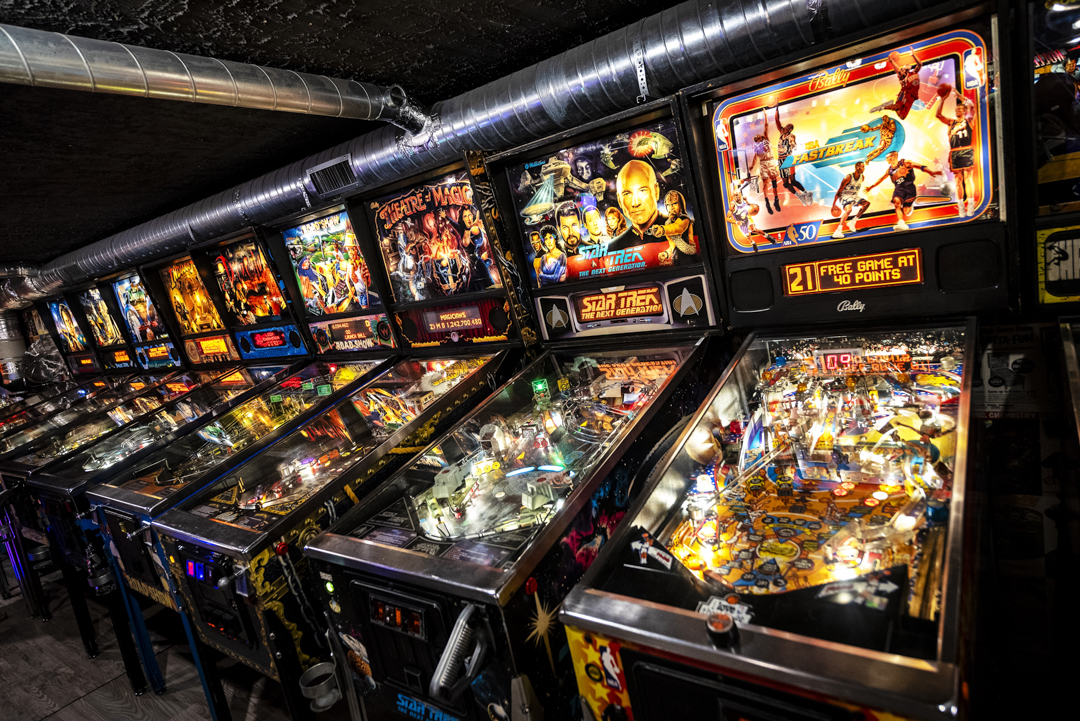
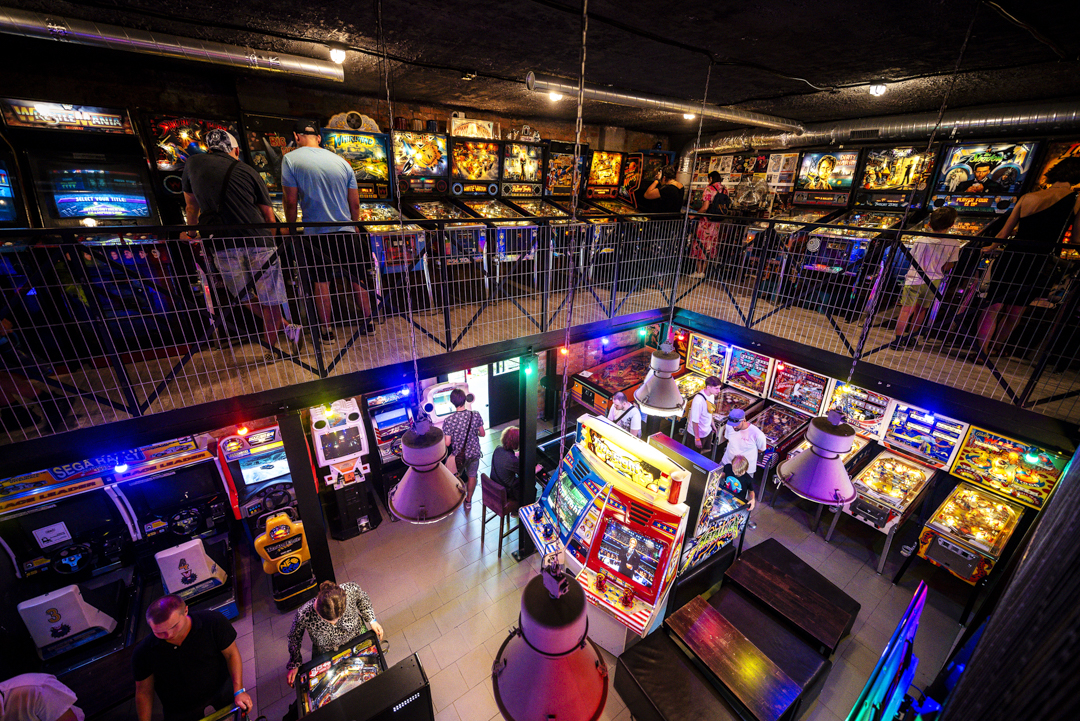
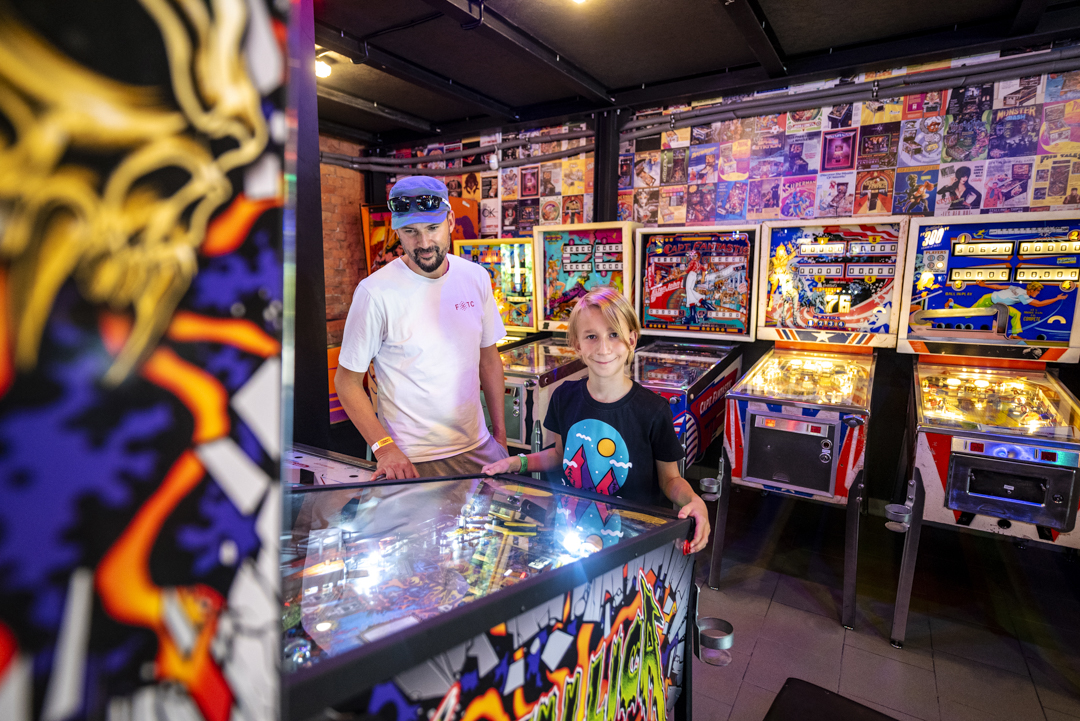
I kept my favourite discovery in Warsaw for the end. A fifteen-minute walk from the Warsaw Rising Museum and in a neighbourhood where you would normally never come as a tourist, is a train station that’s been out of service for some time. Pinball Station can be found in one of the buildings here, and for people of my generation it’s a nostalgic trip back to the arcades of the eighties and nineties. Not only are there literally dozens of original pinball machines with all the usual lights, sounds and themes lined up next to each other, you’ll also find almost all of the classic arcade games from those days on two completely packed floors: all the old Mortal Kombats, shooters like Time Crisis and Jurassic Park and even older classics like Donkey Kong and the original Mario Bros. Downstairs you’ll find some of those racing games with gas pedals and steering wheels you used to play with your friends at just about every fair 25 years ago. I almost teared up. What makes everything even better is that you just pay an entrance fee to get a wristband valid for the whole day, and then you don’t have to put a single coin into a single slot. Wonderful. www.pinballstation.pl
Ps: if all this gaming got you hungry, you’ll find the Nocny Market a little further away in the same station. This is a night market full of exotic food stalls. You’ll have to walk quite some way though, because the entrance is on the other side of the tracks.
Hotels in Warsaw and practical travel info
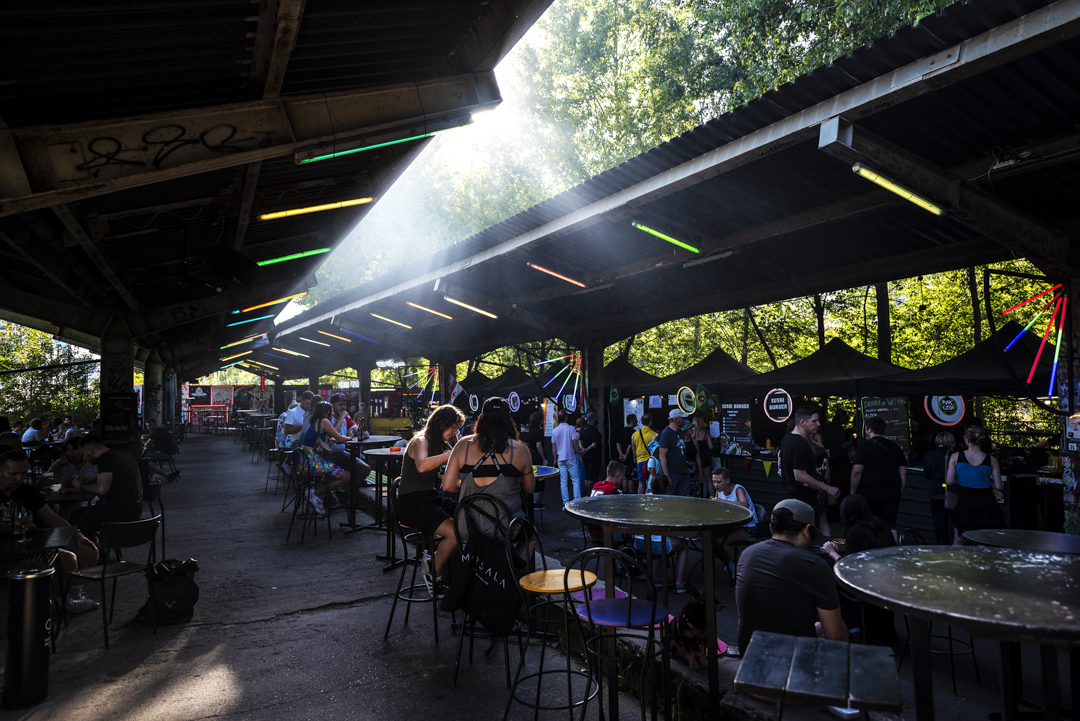
I slept at Motel One – Warszawa Chopin for four nights. This is a trendy venue, right next to the Chopin Museum and a metro station. Nice room and the screensaver on my smart TV was a coral reef full of colourful fish. I might have been staring at it a little too much. www.motel-one.com/pl/hotele/warszawa/hotel-warszawa-chopin/
The subway is by far the most convenient means of transport to get everywhere on the central axis. Trains come through regularly and on time. You can buy a ticket valid for several days and with it you can also get on the buses. For things a bit further away, Uber is a good option. I took four different Ubers with no issues at all, and they were quite cheap.
For more information on Warsaw as a tourist destination, surf to www.warsawtour.pl. If you want to know more about other Polish destinations, surf to: www.polen.travel
I ate very well at the Muzealna Restaurant. It’s located in the basement of the gigantic National Museum, but comes with a cosy garden and offers fine dining with local products. www.restauracjamuzealna.pl
My guide in Praga was called Piotr and was a nice guy to tag along with, with a lot of knowledge about the city. He doesn’t have a website yet. Anyone who wants to can contact him here: piokarpinski@yahoo.com.
My Lufthansa flight from Brussels to Warsaw had a stopover in Munich. Unfortunately, my connecting flight was an hour late, and then had to fly back to Munich due to a technical defect. Afterwards we were kept in the dark for two hours to then suddenly see our flight cancelled. Remember that under EU-law, passengers delayed for over four hours due to no fault of their own, are entitled to financial compensation. I received mine shortly after submitting my complaint. Don’t forget this should it happen to you.
Looking for some other European Adventures? Read my stories on Porto, Vilnius, Riga, Dresden and Interlaken.






















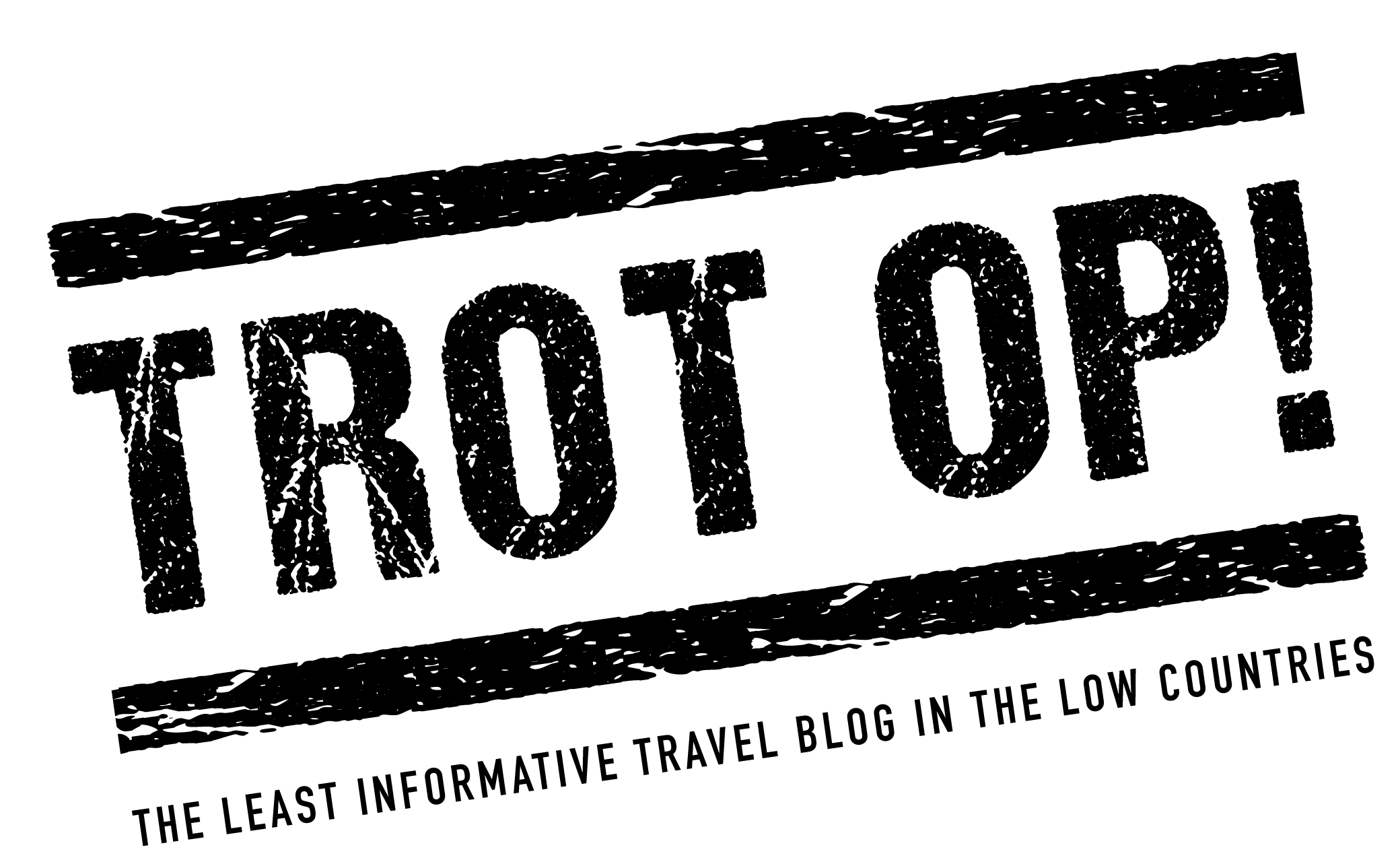
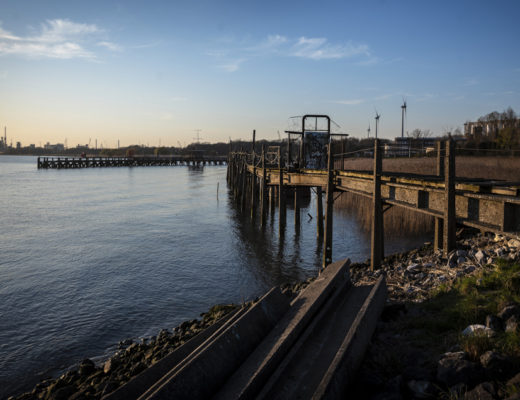

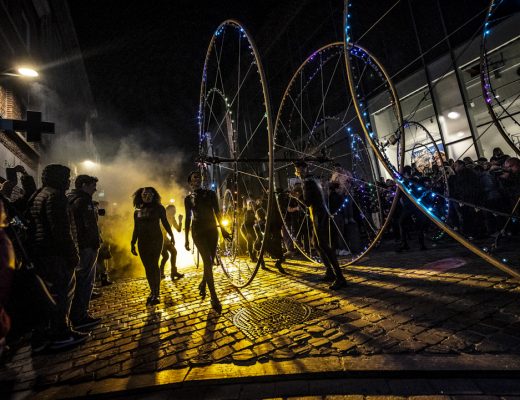

No Comments